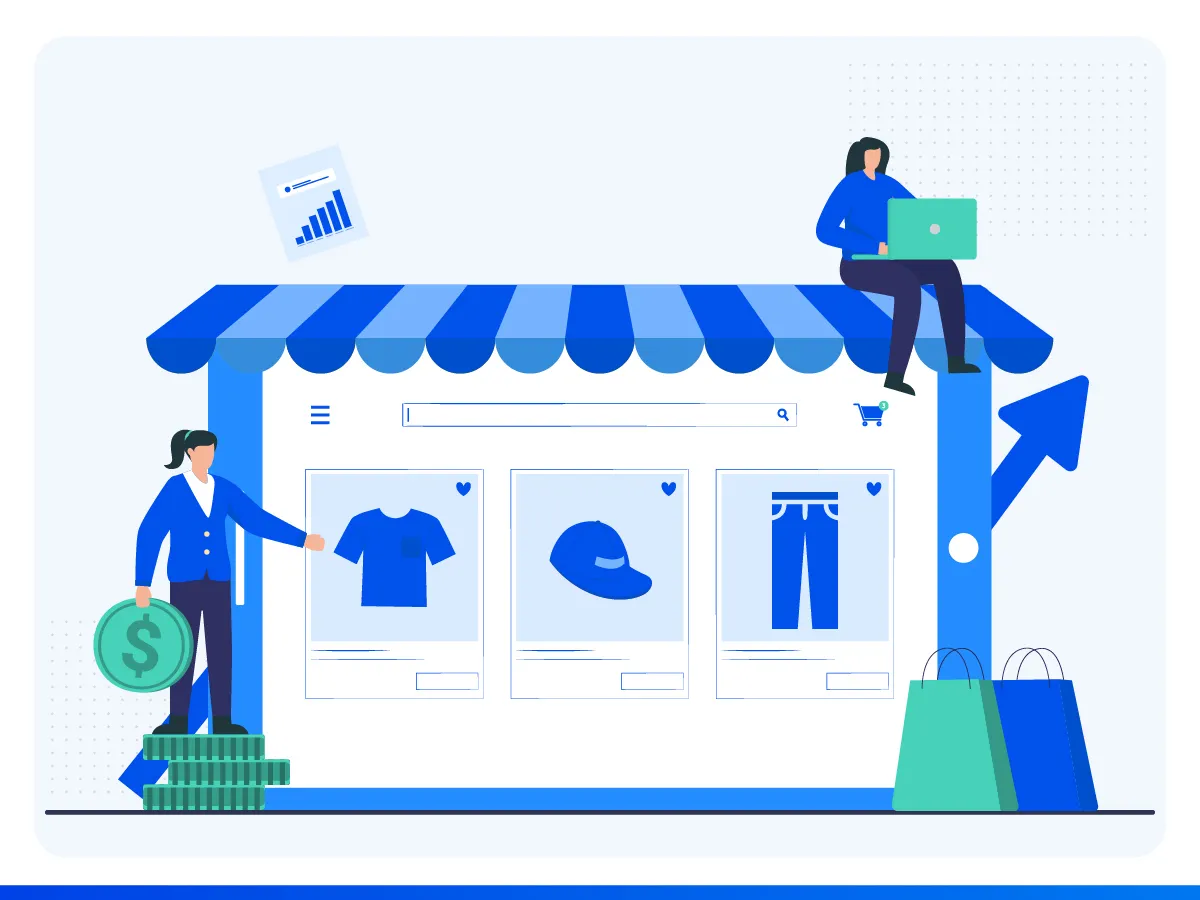
In the competitive world of fashion, every brand strives to break through the noise and stand out. One way to do so is through growth hacking – a process of rapid experimentation using various marketing tactics and innovative techniques to grow a business in a short period. In this article, we’ll explore the top 10 growth hacking strategies every fashion brand should consider to stay ahead of the game.
Understanding Growth Hacking in the Fashion Industry
Before diving into the strategies, it’s essential to understand what growth hacking is and why it’s crucial for fashion brands. Growth hacking is all about experimenting with different tactics to find the most effective and efficient way to grow a brand. In the fashion industry, where trends change fast, and consumers expect constant innovation, growth hacking can help brands stay relevant and appeal to their target audience.
What is Growth Hacking?
Growth hacking is a process of identifying and implementing innovative marketing techniques to increase brand awareness, attract new customers, and retain existing ones. It involves rapid experimentation, data analysis, and optimization to find the most effective strategies for growth. Growth hacking is often associated with startups, but it’s becoming increasingly popular among established brands looking to stay competitive.
One of the most significant advantages of growth hacking is the ability to achieve rapid growth with limited resources. By focusing on tactics that have the most significant impact, brands can save time and money while still achieving impressive growth rates.
Another essential aspect of growth hacking is the use of data to inform decision-making. By analyzing data from various sources, including social media, website analytics, and customer feedback, brands can gain valuable insights into their target audience and tailor their marketing efforts accordingly.
Why is Growth Hacking Important for Fashion Brands?
Growth hacking is essential for fashion brands because it enables them to keep up with the fast-changing trends and consumer preferences. By experimenting with different tactics and measuring their impact, brands can identify the most effective strategies for growth and stay ahead of their competitors. Moreover, growth hacking can help brands save time and money by focusing on the tactics that work best for them.
In addition to staying competitive, growth hacking can also help fashion brands build stronger relationships with their customers. By understanding their target audience and tailoring their marketing efforts accordingly, brands can create more personalized and engaging experiences for their customers. This, in turn, can lead to increased customer loyalty and advocacy, which are crucial for long-term growth.
Another benefit of growth hacking for fashion brands is the ability to test new product ideas quickly and efficiently. By using tactics such as A/B testing, brands can gauge customer interest in new products before investing significant resources in their development and production.
In conclusion, growth hacking is a crucial process for fashion brands looking to stay competitive and achieve rapid growth. By experimenting with different tactics, analyzing data, and focusing on the most effective strategies, brands can stay ahead of the curve and build stronger relationships with their customers.
Building a Strong Brand Identity
One of the first steps in growth hacking for fashion brands is to build a strong brand identity that resonates with their target audience. A strong brand identity can help a brand stand out in a crowded marketplace and attract loyal customers who share their values. Here are some tactics for building a strong brand identity:
Defining Your Brand’s Unique Selling Proposition
A unique selling proposition (USP) is what sets a brand apart from its competitors. It’s the reason why customers should choose your brand over others. To define your brand’s USP, ask yourself what makes your brand unique and why customers should care. Is it your use of sustainable materials, your commitment to inclusivity, or your innovative design? Once you have identified your USP, make sure to communicate it clearly across all your marketing channels.

For example, if your brand is committed to using sustainable materials, you can highlight this in your marketing messaging by emphasizing the environmental benefits of your products. You can also showcase your commitment to sustainability by using eco-friendly packaging and partnering with organizations that share your values.
Creating a Consistent Visual Identity
A consistent visual identity can help customers recognize your brand easily and create a sense of trust and familiarity. Your visual identity includes your logo, color scheme, typography, and overall design style. Make sure to use the same visual elements across all your touchpoints, from your website to your packaging and social media profiles.
For example, if your brand’s visual identity is modern and minimalist, make sure that your website and social media profiles reflect this aesthetic. Use the same color scheme and typography across all your marketing materials to create a cohesive and recognizable brand identity.
Crafting a Compelling Brand Story
A compelling brand story can help customers connect with your brand on an emotional level. Think about your brand’s origins, mission, and values and how you can communicate them in a way that resonates with your target audience. Use storytelling techniques to create a memorable narrative that showcases your brand’s unique personality and values.
For example, if your brand was founded by a group of friends who were passionate about sustainable fashion, you can tell the story of how they came together to create a brand that reflects their values. You can also highlight your brand’s commitment to sustainability by sharing stories about the artisans who create your products and the eco-friendly materials you use.
By defining your brand’s USP, creating a consistent visual identity, and crafting a compelling brand story, you can build a strong brand identity that resonates with your target audience and sets your brand apart from competitors.
Leveraging Social Media Platforms
Social media platforms are a powerful tool for fashion brands to reach and engage with their target audience. With billions of users worldwide, social media offers a vast potential for growth. Here are some tips for leveraging social media platforms:
Choosing the Right Social Media Channels
Not all social media platforms are created equal. To get the most out of your social media strategy, you need to choose the channels that align with your target audience’s preferences and behavior. For example, if your target audience is primarily young and female, you may want to focus on platforms like Instagram and TikTok.
Influencer Marketing and Collaborations
Influencer marketing and collaborations can help fashion brands reach new audiences and build trust with their followers. Identify influencers and creators who align with your brand’s values and aesthetics and collaborate with them on sponsored posts, giveaways, or product launches. Make sure to disclose sponsored content appropriately.
Creating Engaging and Shareable Content
Creating engaging and shareable content can help fashion brands increase their reach and engagement on social media. Experiment with different types of content, such as photos, videos, stories, and user-generated content. Make sure to optimize your content for each platform’s unique requirements and use relevant hashtags to make it discoverable.

Implementing Email Marketing Campaigns
Email marketing campaigns can be a cost-effective way for fashion brands to reach and nurture their subscribers. Here are some tips for implementing email marketing campaigns:
Building and Segmenting Your Email List
Building a robust email list is essential for a successful email marketing campaign. Offer incentives, such as discounts or exclusive content, to encourage visitors to subscribe to your list. Once you have built your email list, segment it based on your subscribers’ preferences, behavior, and demographics to personalize your content and increase engagement.
Designing Effective Email Campaigns
Designing effective email campaigns involves several elements, such as subject lines, copy, visuals, and calls-to-action (CTAs). Experiment with different elements to find what works best for your audience. Make sure to optimize your emails for mobile devices and include a clear and compelling CTA to encourage conversions.
Measuring and Optimizing Email Performance
Measuring and optimizing email performance is crucial to ensure the success of your email marketing campaigns. Track your key metrics, such as open rates, click-through rates, and conversions, and use the insights to optimize your emails’ elements and content. Test different elements, such as subject lines, send times, and copy, to find the most effective combination for your audience.
Conclusion
Growth hacking is an iterative and data-driven process that requires experimentation and optimization. By implementing the strategies outlined in this article, fashion brands can identify the most effective techniques for growth and stay ahead of the competition. Building a strong brand identity, leveraging social media platforms, and implementing email marketing campaigns are just some of the tactics that can help fashion brands reach and engage with their target audience efficiently and effectively.
